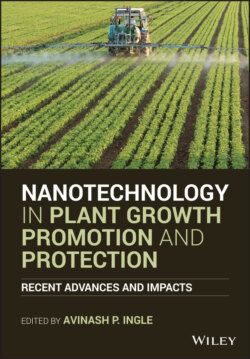Читать книгу Nanotechnology in Plant Growth Promotion and Protection - Группа авторов - Страница 23
1.2.7 Limitations of Nanofertilizers
ОглавлениеThe successful use of some nanofertilizers for improved crop productivity was demonstrated. But the deliberate introduction of this technology in farming could lead to unintended nonreversible results. In this scenario, the use of this technology in farming productivity can be restricted by new environmental and unintentional health issues. Phytotoxicity of nanomaterials is also a problem because many plants react in a dose‐dependent manner to different nanomaterials. Consequently, before market implementation, it is extremely necessary to look at the advantages of nanofertilizers and their limitations (Zulfiqar et al. 2019).
Especially because of their small size with enhanced surface area, nanomaterials are very reactive. Often of importance are the reactivity and volatility of these materials. This raises safety concerns for farm workers who may be exposed to the use of xenobiotics during application (Nair 2018). Given the anticipated benefits, the efficacy and effectiveness of these new fertilizers must therefore be examined. Indeed, their acceptance of sustainable agriculture is limited to their acceptance in terms of transport, toxicity, and availability and unintended environmental consequences on the exposure to biological systems (Nair 2018; Zulfiqar et al. 2019).
Risk assessment and the risk identification of nanomaterials including the assessment of the life cycle of nanomaterials or fertilizers is critical and to the prioritization of toxicological research. This is particularly valid with regard to nanoparticles accumulation in plants and potential health issues. In addition, the use of nanofertilizers made of nanomaterials created serious concerns about human and food safety (White and Gardea‐Torresdey 2018). Some of the studies have shown the phytotoxic effects of nanoparticles on plants, the phytotoxicity of nanoparticles is dependent on the type of plant species, mode of application, time of exposure, and concentration and type of the applied nanoparticles. It is important to study the degree of toxicity of each nanoparticle to any given crop so as to understand translocation and accumulation of nanofertilizers and possible interactions with soil or plant compounds and also the accumulation of nanoparticles in different plant tissues (White and Gardea‐Torresdey 2018; Zulfiqar et al. 2019).
